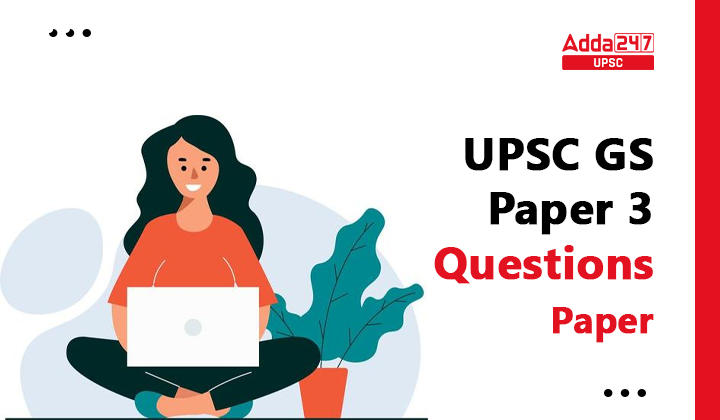Table of Contents
In this article, we are explaining the UPSC GS 3 Paper, Question Number 16 which includes an Introduction, Structure, Definition, Importance, and Conclusion on the topic What is the main task of India’s third moon mission which could not be achieved in its earlier mission? List the countries that have achieved this task. Introduce the subsystems in the spacecraft launched and explain the role of the Virtual Launch Control Centre’ at the Vikram Sarabhai Space Centre which contributed to the successful launch from Sriharikota. Check the complete UPSC GS Paper 3 question number 16 answer review here.
What is the main task of India’s third moon mission which could not be achieved in its earlier mission? List the countries that have achieved this task. Introduce the subsystems in the spacecraft launched and explain the role of the Virtual Launch Control Centre’ at the Vikram Sarabhai Space Centre which contributed to the successful launch from Sriharikota.
Introduction:
India’s third moon mission, highlighting its unique objectives, the subsystems onboard the spacecraft, and the role of the Virtual Launch Control Centre at the Vikram Sarabhai Space Centre (VSSC) in the successful launch from Sriharikota.
Structure:
I. Main Objective of India’s Third Moon Mission
- Previous Missions: Briefly mentioning India’s earlier lunar missions, Chandrayaan-1 and Chandrayaan-2.
- Unachieved Task: Discussing the primary task that remained unaccomplished in the previous missions.
II. Countries That Achieved the Task
- List of Nations: Enumerating the countries that have successfully achieved the specific lunar task.
- International Accomplishments: Highlighting the significance of the task in the context of lunar exploration.
III. Subsystems in the Spacecraft
- Orbiter, Lander, and Rover: Introducing the key components of the lunar mission. Scientific Instruments: Mentioning the specialized instruments on board for lunar exploration.
- Communication Systems: Discussing the communication technology used for data transmission.
IV. Role of the Virtual Launch Control Centre
- Vikram Sarabhai Space Centre (VSSC): Providing context about VSSC’s involvement in mission control.
- Virtual Launch Control Centre: Explaining the concept of a virtual control centre.
- Contribution to Launch: Discussing how the Virtual Launch Control Centre facilitated the successful launch from Sriharikota.
Conclusion:
India’s third moon mission represents a significant step in advancing lunar exploration, particularly in achieving the unaccomplished task. The spacecraft’s subsystems and the innovative use of a Virtual Launch Control Centre have played pivotal roles in this mission’s success, further solidifying India’s position in the field of space exploration.
UPSC GS Paper 3 Question Evaluation
Evaluating a question from the UPSC (Union Public Service Commission) General Studies Paper 3 requires an understanding of the context, content, and overall approach the question takes
Ultimately, the quality of a UPSC GS Paper 3 question is crucial in evaluating candidates’ knowledge, analytical skills, and problem-solving abilities. A well-crafted question can lead to a more meaningful and equitable assessment of candidates’ capabilities
Benefits of GS Paper 3 Evaluation
Here are following few steps which is important for a candidate to understand in the evaluation process of a question paper.
- Clarity: Is the question clear and precise?
- Relevance: Does it align with the syllabus and current events?
- Depth: Does it require critical analysis?
- Balance: Is it well-rounded and not too broad or narrow?
- Multidisciplinary: Does it integrate knowledge from various fields?
- Analytical: Does it ask for analysis, not just description?
- Time and Fairness: Is it realistic for the exam and fair to all candidates?
- Innovative: Does it encourage creative thinking?
- Overall Significance: Does it assess a candidate’s comprehension and problem-solving abilities effectively?
| UPSC Mains Related Links | |
| UPSC Mains 2023 Essay Paper Topics | Visionary Decision Making |
| UPSC Mains Question Paper 2023 | Inspiration for creativity springs |
| UPSC Main GS Paper 1 Analysis 2023 | UPSC Main GS Paper 2 Analysis 2023 |



 TSPSC Group 1 Question Paper 2024, Downl...
TSPSC Group 1 Question Paper 2024, Downl...
 TSPSC Group 1 Answer key 2024 Out, Downl...
TSPSC Group 1 Answer key 2024 Out, Downl...
 UPSC Prelims 2024 Question Paper, Downlo...
UPSC Prelims 2024 Question Paper, Downlo...
